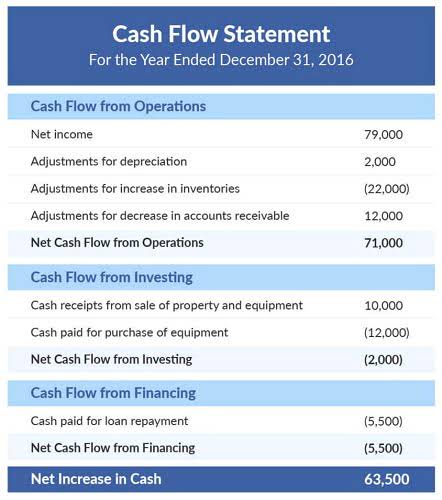
It is prudent to reconcile credit card accounts and checkbooks on a regular basis, for example. This is done by comparing debit card receipts or check copies with a person’s bank statements. Once the adjusted balance What is bank reconciliation of the cash book is worked out, then the bank reconciliation statement can be prepared. In this way, the number of items that cause the difference between the passbook and the cash book balance gets reduced.
- Specifically, it is often the responsibility of the company’s bookkeeper or accountant to perform the bank reconciliation process.
- HighRadius’ Account Reconciliation software helps you leverage an out-of-the-box matching rule system, and analyze large volumes of data with accuracy, thereby reducing reporting errors.
- Once you’re done comparing the accounts, reconciling any problems, and adjusting your bank and cash balances, there should be an unreconciled difference of $0 between your general ledger and bank statement.
- Cloud accounting software like Quickbooks makes preparing a reconciliation statement easy.
- Here, records such as receipts or canceled checks are simply compared with the entries in the general ledger, in a manner similar to personal accounting reconciliations.
Compare top picks for business accounting software
You can quickly see your cash flow, revenue, and expenses, enabling you to make informed decisions with confidence. Human error can occur when recording transactions in the company’s books or when the bank processes transactions. If you use cloud accounting software, this can be made relatively easy by using the reconciliation function. If you’re working for yourself, you (or your accountant or bookkeeper) will perform bank reconciliation. But if multiple people handle your business’s finances, the person reconciling the accounts should probably be different from the person signing the checks.
Direct Deposits into the Bank Account

For example, if a company writes a check that has not cleared yet, the company would be aware of the transaction before the bank is. Similarly, the bank might have received funds on the company’s behalf and recorded them in the bank’s records for the company before the organization is aware of the deposit. Cash flow can be calculated through either a direct method or indirect method.
Review the closing balance and, if necessary, produce a reconciliation report

When you’re performing bank reconciliation, you’re basically following the same process as balancing a checkbook—you’re just doing it on a business-wide scale instead of a personal one. Not only does the bank provide basic checking services, but they process credit card transactions, keep cash safe, and may finance loans when needed. The Journal entry for bank reconciliation typically involves recording the adjustments that have been identified during reconciliation.
- Neglecting this practice can lead to inaccurate records, increased fraud risk, and potential compliance issues.
- They can also be used to identify fraud before serious damage occurs and can prevent errors from compounding.
- But if multiple people handle your business’s finances, the person reconciling the accounts should probably be different from the person signing the checks.
- To reconcile your bank statement with your cash book, you need to ensure that the cash book is complete.
- This can make it difficult to manage finances effectively and make informed business decisions.
- By doing so, you can identify any omissions or errors in the data and reconcile them by making necessary adjustments.
Bank Reconciliation: Purpose, Example, and Process
The goal of this process is to ascertain the differences between the two, and to book changes to the accounting records as appropriate. The information on the bank statement is the bank’s record of all transactions impacting the entity’s bank account during the past month. We strongly recommend performing a bank reconciliation at least on a monthly basis to ensure the accuracy of your company’s cash records. A monthly reconciliation helps to catch and identify any unusual transactions that might be caused by fraud or accounting errors, especially if your business uses more than one bank account. Reconciling bank statements with cash book balances helps you, as a business, to know the underlying causes that lead to such differences.
Professional services
Resolving the issue could mean paying a bill, depositing a check, or entering a forgotten transaction into your general ledger. Add the amount of deposits in transit and subtract the amount of any outstanding checks from your bank statement’s cash balance to arrive at (and record) an adjusted bank balance. Similarly, add any interest payments or bank fees to your business’s cash accounts to find your adjusted cash balance.
Understanding the Bank Reconciliation Statement
NetSuite Helps Automate Account Reconciliation and Transaction Matching Processes – PR Newswire
NetSuite Helps Automate Account Reconciliation and Transaction Matching Processes.
Posted: Wed, 14 Jun 2023 07:00:00 GMT [source]
This may occur if you were subject to any fees, like a monthly maintenance fee or overdraft fee. For interest-bearing accounts, a bank adjustment could be the amount of interest you earned over the statement period. By automating the gathering and reconciliation of financial records, accounting software provides you with real-time insights into your financial position.
For instance, a company will have one Cash account for its main checking account, a second Cash account for its payroll checking account, and so on. For simplicity, our examples and discussion assume that the company has only one checking account with one general ledger account entitled Cash. HighRadius’ Account Reconciliation software helps you leverage an out-of-the-box matching rule system, and analyze large volumes of data with accuracy, thereby reducing reporting errors.
- The frequency of reconciliations depends on the nature of the business and the types of reconciliation.
- Start with a free account to explore 20+ always-free courses and hundreds of finance templates and cheat sheets.
- When you’re performing bank reconciliation, you’re basically following the same process as balancing a checkbook—you’re just doing it on a business-wide scale instead of a personal one.
- In these instances, a reconciliation report needs to be produced, which quantifies and explains the reasons for the closing balance between the two data sources.
- However, there can be situations where your business has overdrafts at the bank.
Reconciliation for businesses
If you’re missing transactions in your personal records, add them and deduct the amount from your balance. If you’re finding withdrawals that aren’t listed on the bank statement, do some investigation. If it’s a missing check withdrawal, it’s possible that it hasn’t been cashed yet or wasn’t cashed by the statement deadline. To start with, businesses can adopt bank reconciliation templates to match bank statements with the cash book.
As outlined above, bank reconciliations is a process that compares and matches the financial records of a business with the bank statements to ensure they are consistent and accurate. It verifies that the purchases and transactions made align with those recorded by the bank for the same period. By doing so, you can identify any omissions or errors in the data and reconcile them by making necessary adjustments. This is especially useful for large organizations with complex cash transactions often.Finally, bank reconciliation is an essential tool in detecting and preventing fraud.